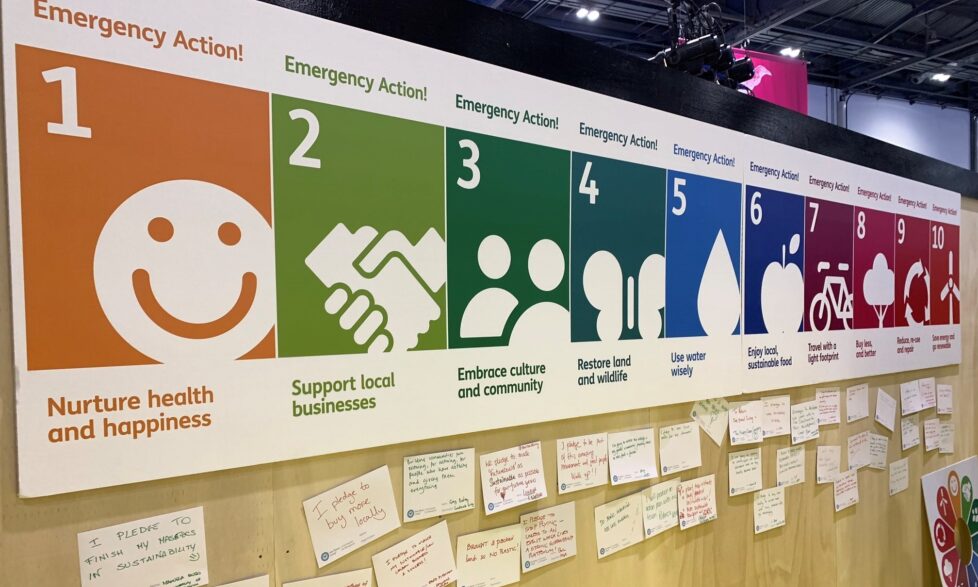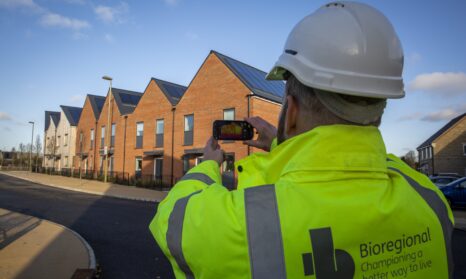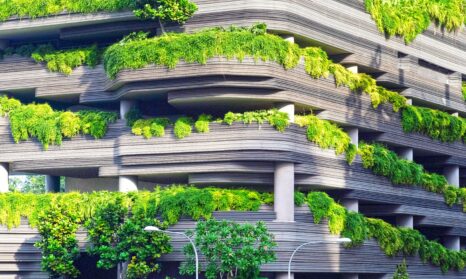10 emergency actions for the built environment
We’re in a climate and ecological emergency. It’s time for action. And there’s no better industry to lead the way that the built environment, which emits almost 40% of the world’s carbon emissions. Our buildings mainly run on fossil fuels and aren’t properly insulated, as well as generating enormous amounts of waste and carbon emissions during construction.
What’s more, our streets and communities aren’t designed to help people lead healthy, happy and sustainable lives. They’re centred on single-occupancy, heavily polluting cars because we tend to work and shop far from home. We don’t know our neighbours. There’s little space for nature. The potential for positive change is immense.
A long-time advocate of this potential is Futurebuild, which opened its doors last week and continued its mission to catalyse sustainable change in the built environment. In the vast expanse of London’s ExCel arena, 27,000 people and 400 exhibitors, including yours truly, came together to share and absorb the sector’s latest knowledge, innovations and technologies – all focused on responding to the climate emergency.
How we helped
As well as showcasing our sustainable placemaking services, we wanted to make sure attendees went away with concrete ways to respond to the climate emergency. Using our decades of experience in sustainability and the built environment we shared ten ‘emergency actions’ they could take when creating places to live, work and do business.
The climate and ecological emergency may sometimes feel insurmountable, but every action makes a difference
These actions are shaped by One Planet Living®, our sustainability framework of ten simple principles that creates joined-up, people-focused sustainability strategies for market-leading development, both –big and small.
In the interest of fairness, we want to share that advice with you all too! So, here are our top tips for creating truly sustainable and people-friendly developments, with some examples of inspiring communities already achieving a brighter, fairer and greener future.
Our One Planet Living emergency actions for the built environment
- Health and happiness: Design climate-resilient places that promote healthy habits.
WGV at White Gum Valley in Western Australia has cleverly designed houses and streets. It provides cooler homes that harness solar energy in a safe, active community with plenty of green space. - Equity and local economy: Be fair - support local businesses and affordable housing.
A sustainable built environment isn't all about carbon - it also embodies fairness, such as providing lower-cost homes. Greencore Homes' Kings Farm Close is an ultra-low carbon community with a huge 40% affordable housing. - Culture and community: Boost community by creating shared spaces.
We mustn’t forget that buildings are made for people – and people want to live in places with a strong sense of neighbourliness.
At Grow Community on Bainbridge Island, close to Seattle, people of all ages come together to use the shared gardens, with 65% of residents taking advantage of these social spaces. - Land and nature: Create a connection with nature, and help it thrive.
Disneyland’s Les Villages Nature Paris revamped an intensively farmed site into a wildlife haven, planting 28,000 trees and 430,000 other flowers and shrubs. Creating space for nature can be done in abundance. - Sustainable water: Use water-efficient appliances and rainwater harvesting.
Using too much water is threatening our future security. Developers can adopt simple measures that save water and reduce bills for residents.
East Village on Knutsford, Australia, harvests rainwater for gardening, flushing toilets, washing machines and, in a first for Western Australia, the home hot water system. - Local and sustainable food: Promote plant-based protein in diet choices and provide space to grow food.
Don't leave food as an afterthought in your development - our diets cause a quarter of global emissions.
One Brighton put rooftop allotments in its design, becoming a much-loved aspect of the community and influencing others elsewhere to do similar things - Travel and transport: Make sure green travel is always the easiest option
Create places where environment-friendly choices are the simplest ones.
Zibi in Ottawa, Canada is building a highly walkable, mixed-use community where residents are close to shops and offices, reducing the need for cars. - Materials and products: Cut down on embodied carbon in materials
Embodied carbon will make up almost half of total new construction emissions between now and 2050.
Springfield Meadows by Ssassy Property is using panels made of hemp and lime to reduce the embodied carbon of its homes by a staggering 90% - Zero waste: Think circular – there’s no such thing as waste
The UK construction industry is responsible for 60% of all materials used and a third of all waste. But it’s possible to dramatically reduce this. Nearly all the steel at BedZED was reclaimed - mostly from Brighton railway station.
Circular thinking also more cost-effective – a recent report found that adopting circular principles can help the sector achieve significant financial returns. - Zero carbon energy: Aim for net-zero carbon…then make sure you achieve it!
Developers must act now to create energy-efficient buildings powered by renewables if we’re to achieve net zero before the UK's 2050 deadline.
The Elmsbrook development shows this is possible and residents are also saving £400 per year on bills - an added bonus!
Act now
The climate and ecological emergency may sometimes feel insurmountable, but every action makes a difference and our One Planet Living framework is designed to break things down into manageable steps.
So, what are you waiting for? Learn more about the One Planet Living framework and download our guidance today to get started. There’s no time like the present.
Bioregional's One Planet Living framework helps guide our sustainable placemaking services.








